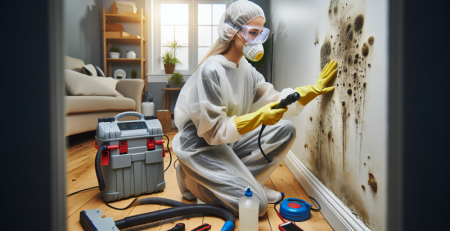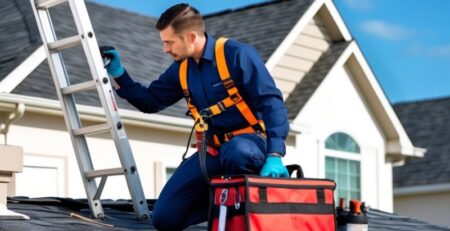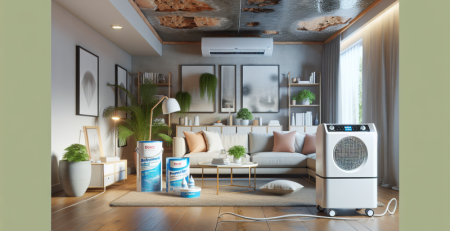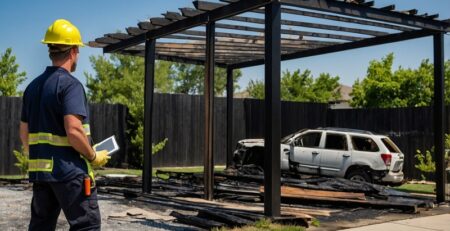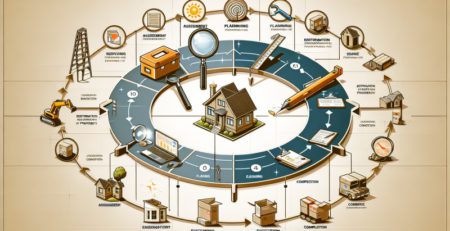DIY Mold Testing: What You Need to Know
**DIY Mold Testing: What You Need to Know**
Are you concerned about mold lurking in your home? Understanding how to conduct DIY mold testing can empower you to take control of your living environment. In this guide, we’ll explore essential information about mold testing, helping you identify potential issues before they escalate.
DIY mold testing involves using simple kits available at local hardware stores or online. These kits allow you to collect samples from various surfaces and air, providing insights into mold presence and types. With the right approach, you can detect mold early and take appropriate action to protect your home and health.
But mold testing is just the beginning of your journey toward a safer home. To ensure effective remediation, you’ll want to understand the best practices for handling mold and when to call in professionals. Join us as we delve deeper into the world of mold testing and remediation, featuring insights from experts in the field. Your home deserves the best care, and we’re here to guide you every step of the way!
Understanding Mold: Types and Health Risks
Mold is a type of fungus that thrives in damp environments. Biologically, it belongs to the kingdom Fungi and can reproduce through spores. Common types of mold found in homes include Aspergillus, Penicillium, and Stachybotrys. Aspergillus is often found in decaying vegetation, while Penicillium is known for its blue-green appearance and can grow on food. Stachybotrys, also known as black mold, poses significant health risks.
Exposure to mold can lead to various health issues. Allergic reactions are common, manifesting as sneezing, runny noses, and skin rashes. Additionally, respiratory problems can arise, particularly in individuals with asthma or weakened immune systems. Some molds produce mycotoxins, which can have toxic effects on the body.
Statistics reveal that mold-related health issues are prevalent. According to the CDC, approximately 10% of the U.S. population suffers from asthma, with mold exposure being a contributing factor. For more information on mold cleanup, visit our mold cleanup page. Once testing confirms a problem, make sure you’re equipped with the essential tools to safely remove the mold. If you want to learn about our services, check out our offerings. For any inquiries, feel free to contact us.
Signs of Mold Growth in Your Home
Mold growth can manifest in various ways throughout your home. Look for visual indicators such as discoloration on walls or ceilings. Fuzzy patches, often green or black, signal potential mold presence. Additionally, a musty odor often accompanies mold. This smell can be strong and persistent, making it easier to identify areas needing attention.
Hidden mold can thrive in unexpected places. Check behind walls, under carpets, and within HVAC systems. These areas often remain damp, creating an ideal environment for mold to flourish.
To conduct a preliminary visual inspection, start in areas prone to moisture, such as bathrooms and kitchens. Inspect corners, around windows, and near plumbing fixtures. Use a flashlight to illuminate dark spaces. If you notice any signs, consider reaching out for professional mold cleanup services. Remember, early detection is crucial in preventing extensive damage. For more information on our services, visit our website.
The Importance of DIY Mold Testing
Homeowners often choose to conduct their own mold tests for several reasons. First, DIY mold testing offers a cost-effective solution. Professional testing can be expensive, while DIY kits are generally affordable and readily available. Additionally, convenience plays a significant role. Homeowners can test their spaces at their own pace, without waiting for an appointment.
Early detection of mold is crucial. It allows homeowners to address issues before they escalate. Mold can cause health problems and damage property, so identifying it early can save time and money. Furthermore, prevention is key. Regular DIY testing can help maintain a healthy living environment.
In some scenarios, DIY testing proves particularly beneficial. For instance, if a homeowner notices a musty smell or water damage, a quick DIY test can provide immediate answers. Similarly, after a flood or leak, testing can confirm whether mold has begun to grow. While DIY tests may not be as comprehensive as professional assessments, they serve as a reliable first step. For more information on mold cleanup, visit our services page. If you need assistance, feel free to contact us.
Types of DIY Mold Testing Kits
When exploring DIY mold testing kits, you’ll find several types tailored to different needs. Air sampling kits collect airborne spores, providing insight into mold presence in your environment. These kits typically include a pump and a petri dish. After exposure, you send the dish to a lab for analysis. Surface sampling kits, on the other hand, test specific areas. They often come with swabs or tape to collect samples from walls or furniture.
Popular brands like Mold Armor and ProLab offer various options. Mold Armor’s air sampling kit is user-friendly, but it may lack comprehensive lab analysis. Conversely, ProLab provides detailed results but can be pricier.
When choosing a kit, consider your specific situation. If you suspect mold in the air, opt for an air sampling kit. For visible mold, a surface sampling kit is more appropriate. Always check for lab analysis quality and customer reviews. For more information on mold cleanup, visit our mold cleanup page. Additionally, explore our services to find other restoration options.
Step-by-Step Guide to Conducting DIY Mold Testing
To begin your DIY mold testing, gather all necessary materials. You will need a mold testing kit, gloves, and a clean container for sample collection. Next, select testing locations. Focus on areas with visible moisture or musty odors, such as bathrooms, basements, or around windows.
Once you have your kit and locations, follow the instructions carefully. Open the kit and put on gloves to avoid contamination. Use the provided swabs or plates to collect samples from surfaces. Ensure you collect samples from both suspected mold areas and clean spots for comparison. Seal the samples in the kit as instructed.
After sending your samples to the lab, wait for the results. When you receive them, carefully interpret the findings. If mold is detected, consider contacting a professional for mold cleanup. They can assess the situation and provide effective solutions. If results are negative, maintain regular checks to prevent future mold growth. For more information on mold prevention, visit our about page.
Understanding Mold Test Results
Interpreting DIY mold test results can be straightforward if you know what to look for. Typically, results will include spore counts and types of mold detected. Spore counts indicate the number of mold spores present in the air. For instance, a count below 500 spores per cubic meter is generally considered safe. However, counts above this threshold may require further investigation.
Common mold types include Aspergillus, Penicillium, and Stachybotrys, each with varying health implications. Understanding these terms is crucial. If your results show high levels of toxic molds like Stachybotrys, immediate action is necessary.
To determine if the levels are safe, compare your results against established guidelines. The Environmental Protection Agency (EPA) provides resources for interpreting these findings. If you find elevated levels or specific toxic molds, consider seeking professional help. Mold remediation experts can assess the situation and recommend appropriate actions. For more information on our mold cleanup services, visit our website. Additionally, if you need assistance with water damage, check our water cleanup options.
Remediation: What to Do If You Find Mold
When you discover mold, swift action is crucial. Start by wearing protective gear, including gloves, goggles, and a mask. Seal off the affected area to prevent spores from spreading. Next, remove contaminated materials, such as drywall or carpeting, and place them in sealed bags. Clean non-porous surfaces with a mixture of water and detergent. For stubborn mold, consider using a solution of vinegar or a commercial mold remover.
If the mold covers a large area or if you have health concerns, it’s wise to seek professional remediation services. Experts can assess the situation and ensure thorough removal. They possess specialized equipment and knowledge to handle extensive infestations safely.
To prevent mold from returning, control humidity levels in your home. Use dehumidifiers and ensure proper ventilation in damp areas. Regularly inspect your property for leaks and address them promptly. Additionally, consider applying mold-resistant products during renovations.
Always prioritize safety during the mold removal process. Ensure adequate ventilation and avoid mixing cleaning agents, as this can create harmful fumes. For more information on our mold cleanup services, or to learn about our company, visit our website.
Preventing Mold Growth in Your Home
To effectively prevent mold growth in your home, start by controlling humidity levels. Aim to keep indoor humidity below 50%. Use dehumidifiers in damp areas, especially basements. Additionally, ensure proper ventilation throughout your home. Open windows when weather permits and use exhaust fans in kitchens and bathrooms. This helps reduce moisture accumulation.
Maintaining indoor air quality is crucial. Regularly change HVAC filters and consider using air purifiers. These steps can significantly reduce airborne mold spores. Furthermore, seasonal maintenance plays a vital role. In spring and fall, inspect gutters and downspouts to ensure proper drainage. Clean and repair any leaks promptly to prevent moisture buildup.
Regular inspections are essential for mold prevention. Check hidden areas like behind appliances and under sinks. If you notice any signs of mold, address them immediately. Monitoring your home’s condition can save you from extensive damage. For more information on mold prevention, visit our mold cleanup page. Additionally, learn about our water cleanup services to further protect your home.
Frequently Asked Questions (FAQs)
Mold can manifest in various ways within your home. Common signs include a musty odor, visible spots on walls or ceilings, and increased allergy symptoms among residents. If you notice any of these indicators, it may be time to consider testing for mold. DIY mold testing kits can offer initial insights, but their reliability varies. If your test suggests mold presence, take immediate action to address the issue.
To prevent mold growth, maintain low humidity levels and ensure proper ventilation in your home. Regularly check for leaks and promptly address any water damage. If you suspect extensive mold contamination, hiring a professional for mold remediation is advisable. They possess the expertise and equipment necessary to handle the situation safely.
Mold exposure can lead to various health risks, including respiratory issues and allergic reactions. After water damage, mold can begin to grow within 24 to 48 hours, making swift action crucial. For more information on mold-related services, visit our services page.
Resources for Further Information
For those seeking reliable information on mold, several reputable organizations provide valuable resources. The Environmental Protection Agency (EPA) offers comprehensive guidelines on mold testing and remediation. You can explore their website for detailed information on safe practices. Additionally, the Centers for Disease Control and Prevention (CDC) provides insights into the health impacts of mold exposure. Their resources are essential for understanding mold-related health risks.
Moreover, consider checking out local resources. Many communities have professionals specializing in mold assessment and remediation. These experts can provide tailored advice and services. For further reading, you might find helpful guides on mold testing and prevention through various online platforms.
Staying informed is crucial. Regularly update yourself on mold prevention strategies and health implications. Knowledge empowers you to take proactive measures. For more information about our services or to learn about our company, feel free to reach out. You can also explore our projects to see how we tackle mold-related issues effectively.



